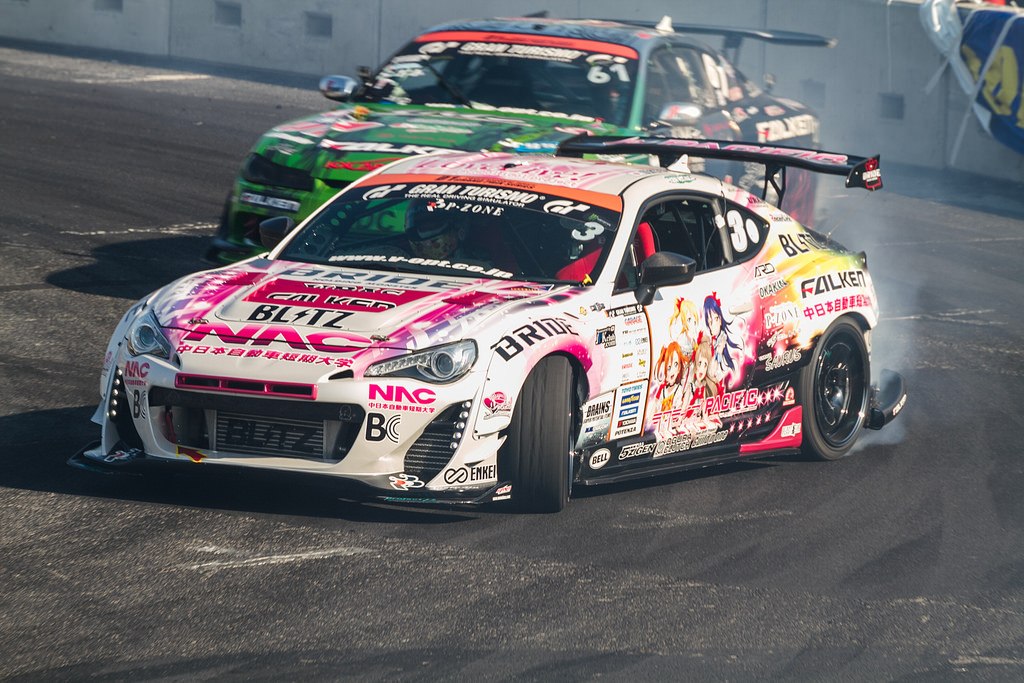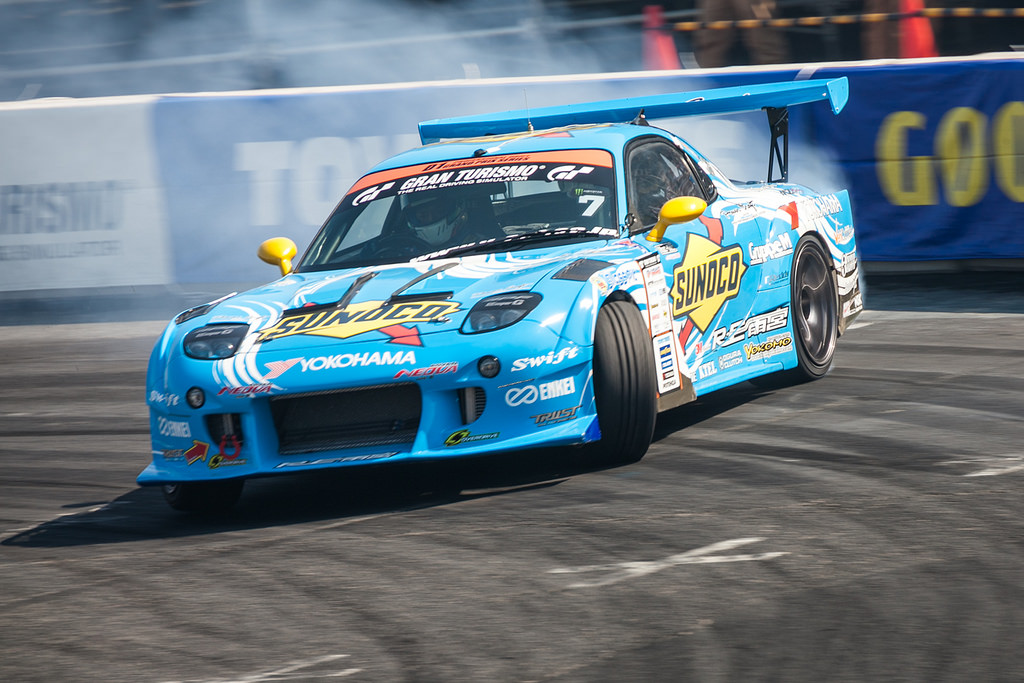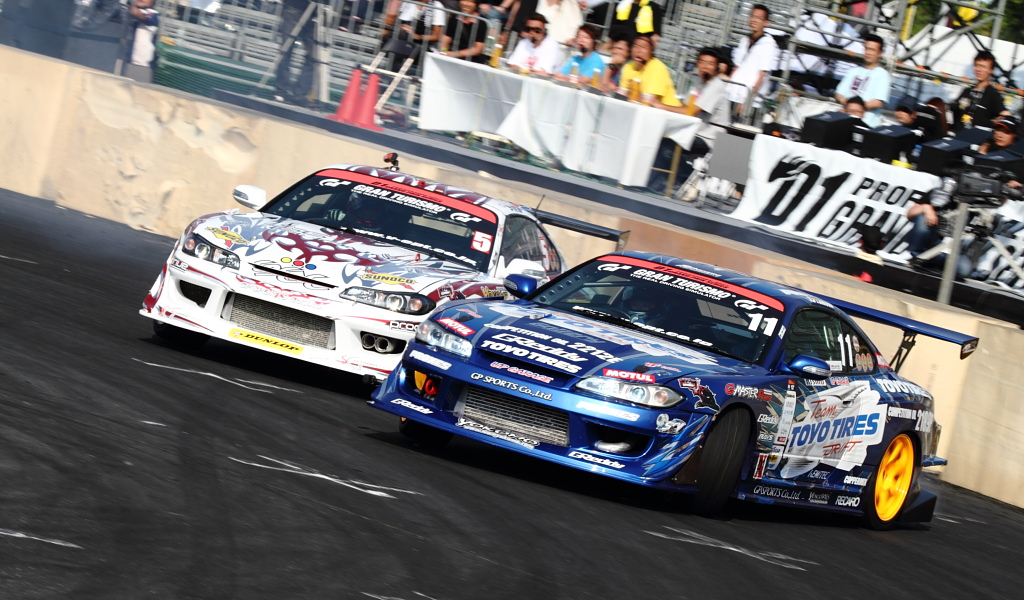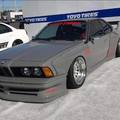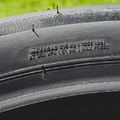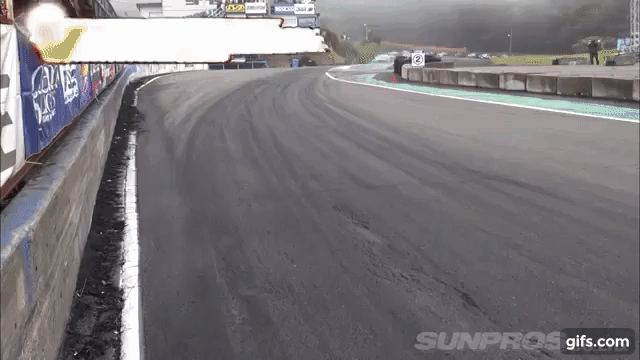
'Cos the Japanese had already been competing sideways way before Formula Drift came up the idea.
Drifting is a stylish form for moving forward. It goes hand-in-hand with eargasmic engine sound which gives you goosebumps, and tasteful, fragnant, thick tyre-smoke. And brings much fun. If you might want something to "blame" for that (in a good way), do it with Japan's geography in the first place. Approximately 3/4 part of the country is highlands and mountains, hence there are much steep, narrow, curvy roads separated from the abyss with a plain metal barrier. It was only a matter of time for the local to push the art of countersteering and turning with the right pedal to the limits.
The first amateur drifting contests were held just for fun and self-entertaining, but they made their way by time: the preparations for a professional, competitive environment started in 1999. Later the madness started spreading outside Japan. The rest - as they say - is history.
Those who are interested in this field, probably already did look it up and learned about Keiichi Tsutchiya and his video called Pluspy, which earned this man the humble nickname "Drift King" in the insiders' circle. Those who not know him: he was one of the fishing blokes in the docks scene of Fast and Furious: Tokyo Drift. Tsutchiya's talent had been forged on street races and tōge runs, he was a pioneer of drifting in his era and classified as an icon to this day. It was him and Daijiro Inada, (owner of Japanese car magazine Option and head organiser of the Tokyo Auto Show) who laid down the foundation of an official pro drifting event.
As it turned out, demand was high: they organised an event in 1999 and 2000 and it became popular so rapidly that they had to transform it to a five-round championship the same year – the All Japan Professional Drift Championship was established.
Actually a proper drifting event doesn't have a complicated schedule: in the classic run called tanso, drifters have to slide their massively negative-cambered, real wheel-drive machineries in a particular curve or curve-combo to take their fate in the hands of the judges. Judges rate the drifters attraction in three main aspects: entrance speed, drifting angle and track usage. This knockout-system happens until the best 16 standing, so every competitor should be highly motivated to give it everything right from the start.
In 2001 the series had been renamed to D1 Grand Prix, and the name-change consisted the introduction of the most spectacular format in drifting: tsuiso runs, or as it is may better known,
the Tandem

Tsuiso is a tradition on tōge runs: it's twin-drifting side-by-side simultaneously, like it was a trained coreography. Drivers have a complete and perfect control over their cars, they can follow but just not to touch each other so precisely that... it's mind-blowing. I wouldn't place my finger there to test their skills though.
So the elimination of the final 16 continues on these tsuiso runs, but generally it's not about the harmony: they still have to complete against each other. Both drivers have a leader and a follower role each round until the final duo then the winner of the competition is found out.
Tandems are not just the most spectacular but the most exciting part of the competition, also other drifting series adopted this format later. D1GP's reputation was increasing constantly and the parts supplier sponsors late-appearance raised the stakes higher. Winning was more tempting than ever. Nevertheless D1GP slowly started to break down its initial roots; The budget of D1 teams was increasing and the less affordable drivers were falling out from the opportunity of professional competition. So the organizers tried to make and export product out of D1. In 2003 a demo-round was held on the Toyota Speedway in Irwindale CA, which was brought under the hood by American marketing company Slipstream Global. The demo was an instant success. Coincidental as it is (or not) but Slipstream Global suddenly realized they want a series in the US too. So they established the Formula Drift Championship in 2004, as a copypasted version of D1GP – and as a concurency to not to let other series to successfully set foot on the American market. Formula Drift is way more popular today – which is easy to understand because Americans really know how to celebrate. Just look at the Indy 500 or the Superbowl: every event they make has a "Disney-like" effect which drags you in instantly, but on the other hand it also stinks by the oil with which they lubricate that sterilized money-maker machine behind this giant circus. Pure, coolminded business.
Meanwhile D1GP found second homes in other countries: they set foot in Malaysia, Australia, New Zealand, and in the UK where D1 quickly grew international. Today it is known as the European Drift Championship. Didn't know that one, did you?
Thankfully, Japanese auto industry has a decent RWD heritage. As D1GP and drifting itself became trendy, these cars never were able to turn old-fashioned.
Even though D1GP drivers don't shower in the spotlight of worldwide fame, that doesn't mean they're just a bunch of bumbling mediocre jerks behind the wheel. They possess a specified D1 pro licence which is not an easy paper to obtain. In Japan you can qualify for it in the lower drift series, but not even the D1GP pilots are in safe: only the best 16 qualifies his place automatically for the next season. For some budget-friendly competition, there's a lower league called D1 Street Legal where you can take your shot with a street legal car in your location's regional division. Regulations by the way are strangely strict: apart from the essential safety features like a five-point rollcage and a four-point harness, competitors must keep the original dashboard but more than that: every car has to have a working stereo system as a warranty of eligibility. The winner of D1SL is awarded with a D1 licence so the opportunity is given and the top league's diversity is guaranteed as well. In 2018 D1SL was replaced with a new series called D1 Light.
Even D1GP drivers compete in some lower series occasionally. Which is cool because it gives this whole thing a family-like spirit and so the budget-competitors can measure their skills with the top drivers.
D1GP is turning 20 soon and its archive is constantly being updated on YouTube. And it's not a bad program to watch at all: a stylish JDM-line up draw some nice lines and make fun on Japan's locally iconic tracks like Ebisu, Suzuka, Meihan, or Tsukuba. Pretty cool, pretty entertaining and the broadcasting is pretty… Japanese.
Do a powerslide to the blog's Facebook page!


